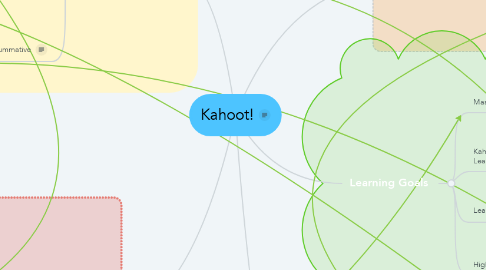
1. Teacher Roles
1.1. Creating questions
1.1.1. Timed assessment
1.1.2. DOK Level
1.1.3. Multiple choice
1.2. Monitoring student input
1.2.1. Guessing vs. Understanding
1.3. Data collection
1.3.1. formative assessment
1.3.2. Percent of understanding
1.3.3. Reflection of learning
1.3.3.1. Misunderstood topics
1.3.3.2. Understood topics
2. Assessment
2.1. Baseline
2.1.1. Introduces a new concept
2.1.1.1. Productive Struggle
2.1.2. Encourages discussion
2.1.3. Activates Prior Knowledge
2.2. Formative
2.2.1. Immediate Feedback
2.2.1.1. Misconceptions
2.2.1.2. Current Understanding
2.2.2. Collaborative Work
2.2.2.1. Survey/Discussion
2.2.3. Self-Improvement
2.3. Summative
2.3.1. Demonstration of Knowledge
2.3.1.1. Completion of Goals
2.3.2. Student-Made Kahoots
3. Learning Activities
3.1. Points
3.1.1. Entertaining
3.2. Competitive and Easily Available
3.2.1. All Around Useful
3.3. Interaction Among Classmates
3.3.1. Updates
3.3.1.1. Teacher Quote
3.3.2. Group Fun
4. Student Engagement
4.1. Interaction
4.1.1. Surveys
4.1.2. Jumble
4.1.3. Discussion
4.1.4. Quiz
4.1.4.1. Leaderboard
4.2. Ease of Use
4.2.1. Access
5. Learning Goals
5.1. Mastery Goals
5.1.1. Checks for Understanding
5.1.2. Targeted Practice
5.1.2.1. Provides Feedback
5.2. Kahoot! Technology used to Support Learning Goals
5.2.1. App
5.2.2. User Friendly
5.3. Learning How to Learn
5.3.1. Quick Poles and Surveys
5.3.1.1. Discussions
5.3.1.2. Future Oriented
5.4. Higher-order Learning Goals
5.4.1. Formative Assessment
5.4.2. Creativity
